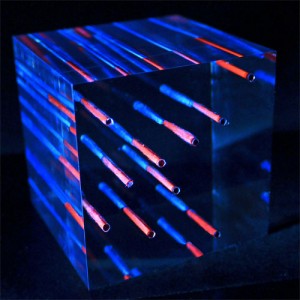Atomic scale one-dimensional magnet Ferromagnetic dislocations embedded in antiferromagnetic crystal

Prof. Yuichi Ikuhara, Associate Professor Naoya Shibata, graduate student Issei Sugiyama and their group at the University of Tokyo’s Graduate School of Engineering, Institute of Engineering Innovation have found that the dislocations introduced into antiferrromagnetic nickel oxide show ferromagnetism with extremely high magnetic coercivity and have shown that the ferromagnetic behavior of the dislocations is due to nickel vacancies introduced along the dislocations.
Dislocations ― “tunnels” ― such as one-dimensional lattice defects in crystals with locally distinct atomic-scale structures were thought to be harmful for electric or magnetic materials and devices. However, Prof. Ikuhara’s group is focusing on the unique properties of one-by-one dislocations because they can be applied to various nano-devices. In this study, dislocations introduced into non-magnetic nickel oxide were revealed to show ferromagnetism. It is extremely hard to switch the polarity of ferromagnetic dislocations introduced into nickel oxide. By combining atomic-resolution scanning transmission electron microscopy observations, electron energy loss spectroscopy analysis and theoretical calculations by supercomputer, the ferromagnetic property was revealed to arise because of nickel atomic vacancies introduced along the dislocations.
The hard nano-magnets discovered in this research can be applied as a pinned layer in magnetic memories which could potentially be miniaturized to 1/10,000 the size of current technologies.
Department release/press release
Paper
Issei Sugiyama, Naoya Shibata, Zhongchang Wang, Shunsuke Kobayashi, Takahisa Yamamoto, Yuichi Ikuhara,
Ferromagnetic dislocations in antiferromagnetic NiO,
Nature Nanotechnology, 8 (2013): 266-270
doi: 10.1038/NNANO.2013.45
Article link
Links
Graduate School of Engineering
Institute of Engineering Innovation, Graduate School of Engineering
Crystal Interface Laboratory, Institute of Engineering Innovation, Graduate School of Engineering








